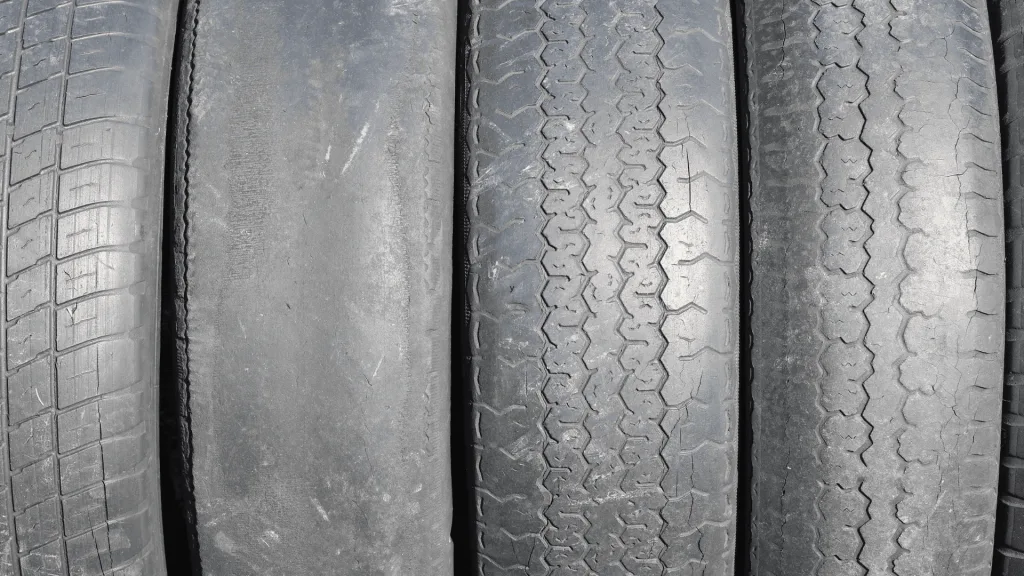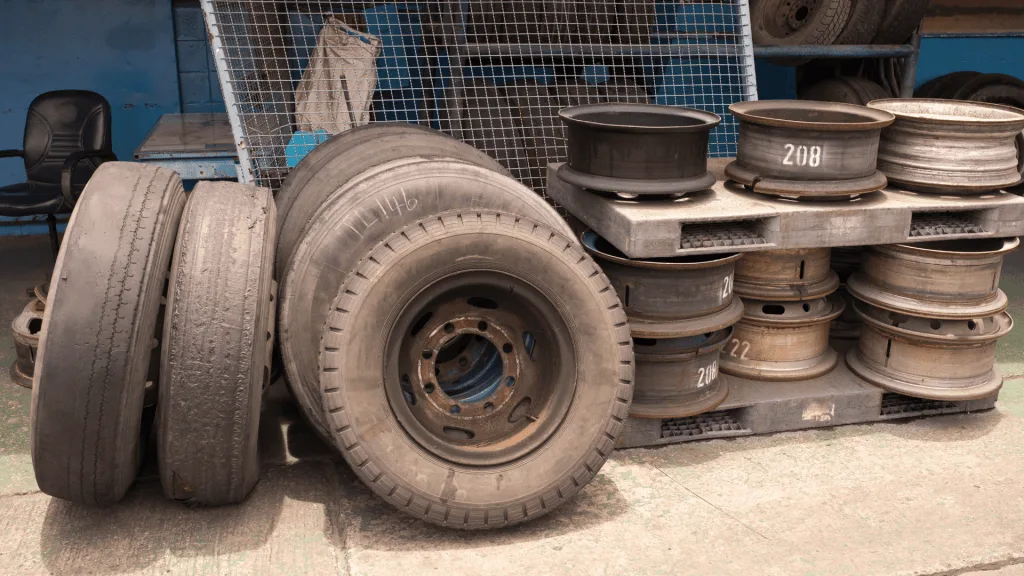Discovering you have a tire or two (or four) with dry rot isn’t a good feeling. Since your wheels are a critical component of your vehicle, keeping them in optimal condition is essential.
Unfortunately, they won’t last forever, so you must keep an eye on them. Knowing what to look for can help you avoid a difficult and potentially dangerous situation.
Today, we’re exploring dry rot and how it can affect your vehicle. We’ll also provide some helpful tips that you can use to help keep your vehicle ready to roll.
Let’s get started!
What Is Dry Rot in a Tire?
Dry rot is when tire compounds deteriorate due to heat, sunlight, or moisture. Unfortunately, The wheels on your vehicle are rubber. They lose their protective oils and resins and can develop cracks inside and outside. They can become brittle, ripped, and weak, making them susceptible to failure.
Once the compounds dry and begin to rot, it accelerates the aging process. There’s very little chance of reversing damage once it starts. In general, it’s best to prevent it from occurring in the first place.
A tire with dry rot can be extremely dangerous. You need regular inspections and take action immediately to avoid any risks.
What Causes Tires to Dry Rot?
Dry rot is relatively common in vehicles, especially those that spend time in hot, desert environments. Heat can dramatically accelerate aging and cause rubber compounds to degrade more quickly. Materials exposed to sunlight and UV radiation are more likely to experience issues than those stored out of the elements.
Another common cause of dry rot is infrequent use. If your car sits unused the wheels can age faster than those used regularly. This is because the rubber has an opportunity to “flex” and distribute heat evenly. If you keep your ride parked most of the time, it’s a good idea to take it for a Sunday drive as often as possible.
It’s also important to consider the quality of the tire. Those made from low-quality materials are more likely to experience dry rotting issues than higher-quality models. However, none are exempt from the dangers if not stored or maintained correctly.

What Are the Signs of Tire Dry Rot
Whether you live in a dry climate or not, inspecting your tires for rot is essential. Cracks in the sidewall or tread are one of the most apparent signs. The size and depth of these can vary, but you must take them seriously.
Additionally, you may notice imperfections or blemishes. Circular cracks can radiate from the center and may contain web-like patterns. Swelling on the sidewall is a sign of internal structural damage.
Another sign of dry rot occurs when driving the vehicle. You may feel vibrations or wobbling as you travel down the road. This typically occurs because the rubber has hardened and is less capable of absorbing road impacts. This is most notable when the damage occurs to the front but can also be felt from the rear wheels.
Pro Tip: Tires are expensive! Before you drop a pretty penny, make sure you know Where To Buy the Best Tires.
How Long Does It Take for Tires to Dry Rot?
Unfortunately, it’s only a matter of time before all tires experience dry rot. A typical rubber wheel will show signs after five or six years. Harsh environmental conditions like direct sunlight, high temperatures, and moisture can expedite the process.
As mentioned earlier, sitting in the same place for too long reduces the rubber’s life. Regularly drive your vehicle to help keep them pliable.
Whether there’s obvious dry rot or not, you should replace your tires every six years. Even if you haven’t reached the mileage promised by the manufacturer, you don’t want to cruise around. It’s an accident waiting to happen if you do. Just be sure you don’t forget to check your spare, too!
Can You Drive a Vehicle with Tire Dry Rot?
Driving on tires that have damage from dry rot is incredibly dangerous. We would never recommend you or anyone else to do this. We strongly recommend regularly inspecting your vehicle for any potential issues. There are usually clues that something is going wrong long before you find yourself in a difficult situation.
The cracks it causes can make it difficult for your wheels to stay at the required pressure. Driving without enough air increases the friction between the rubber and the road, accelerating the damage. It doesn’t take long before a blowout occurs, and you need a safe place to fix your flat.

Should You Replace Dry Rot Tires?
Professionals follow five rules when it comes to replacing tires. Dry rot is one of them. Weak rubber compromises the wheel’s integrity and makes it more likely to fail. You don’t want to travel down the highway at 65 mph when it decides to throw in the towel.
It’ll require a professional inspection if you notice blemishes in the sidewall or tread, circular cracking, or unusual bulging and blistering. They’ll be able to look at the situation and see if you’ll need to replace one or more of them. If it’s been several years since your last purchase, you can bank on buying a new set.
Pro Tip: Need to repair your tires? Use these tips on How to Easily Patch a Tire Hole.
How to Keep Your Vehicle Tires in Good Condition
If you want your tires to last, you must do everything you can to care for them. One of the most important things you can do is to check your pressure regularly. Driving on under-inflated and over-inflated wheels can lead to uneven wear and tear and reduce their life. Don’t wait for the warning on your dash; you should check your air pressure at least once a month.
You should also follow all of the manufacturer’s recommendations. This includes rotations, alignments, and following weight limits.
Additionally, make sure you’re a smart driver. Doing a burnout may have impressed your friends back in high school, but you’re a grown-up now. A new set of wheels will likely come from your bank account, not your family’s.
Many vehicles spend most of their life outside, exposed to the sun and other harmful elements. If you have a garage, this can be a great way to protect all of the components. You can park it safely inside and out of any dangers from mother nature.
Don’t Neglect Your Tires
Dry rot is one of the many issues drivers must watch for in their tires. Now that you know what to look for, you can inspect your vehicle regularly. These inspections only take a few minutes but could save you from a serious situation.
So what are you waiting for? Head out right this second and check your wheels. If you find any issues, make sure you address them immediately!
We’ll Help You Find the Best Free Camping in the USA
You should give it a try!
As a matter of fact, these free campsites are yours to enjoy. Every time you pay federal taxes, you’re contributing to these lands.
Become a FREE CAMPING INSIDER and join the 100,000 campers who love to score the best site!
We’ll send you the 50 Best Free Campsites in the USA (one per state). Access the list by submitting your email below: